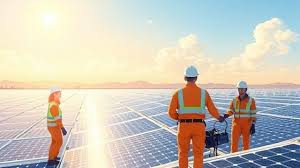Column
Demystifying Ethical Orientation

The core issue at the centre of national consciousness and moral rearmament is ethical orientation among Nigerians. However, the common ghost haunting this ideal is the mystification of the concept itself.
What should be the core value of national orientation in Nigeria? Should Nigeria have a uniformity of values and ideals?
There is urgent need for a national core value reorientation that will engender patriotism among the citizens of Nigeria. Sadly Nigerians have greater loyalty for their religion and ethnicity.
In a country with a diversity of ethnic conglomeration and culture, it is difficult to give a uniform stamp to a national philosophy, core values and ethnical orientation.
It is important to observe that a proper understanding of ourselves as a people of diverse culture will assist us in defining our values, and common ethical precepts. A push towards national integration over time by different political dispensations in Nigeria, would have opened the window for a national ethical orientation, but it has been a case of every one to their tent.
Nigerians are seen or perceived according to their ethnic orientation. We often see ourselves saying, “this is how the Yorubas behave”, the Yorubas have great respect for elders, the Igbos are their brothers keeper. “We also say the Hausa Fulani have great dexterity in political solidarity.”
These ethical stereotypes are also common among the minorities. The Niger Delta group for example are known for their strong will for mobilization towards common goals.
All these are ethical values that can grow a nation. These values can also nurture patriotism, loyalty and nationalism.
However, what every group brings to the common plate is what counts and can add value to a common national ethics.
What often comes to the centre are the wrong values, crime and other forms of social malaise. It is therefore difficult to point at a common ethical standard.
Different religious environments also have their own ethical standards. So it is difficult to talk about the Nigeria ethics. However, there is a common concern about how we can have a Nigeria society that everyone can be proud of, that is orderly, with citizens that demonstrate discipline and exhibit positive national consciousness.
This preoccupation gave rise to the establishment of institutions charged with mobilizing the citizens of Nigeria towards ethical revolution. Once upon a time the military hoisted “War Against Indiscipline”. War Against Indiscipline (W.A.I) was established in 1984/85 by General Mohammadu Buhari and Idiagbon military junta.
It was aimed at correcting social maladjustment and widespread corruption. This good intention was squandered on the altar of bad-will, associated with the dictators who placed more emphasis on the stick rather than the carrot.
The philosophy was predicated on the perception that Nigerians lacked discipline, were morally bankrupt and needed to be whipped into line to maintain orderliness in public places. Queue culture was emphasised.
It became a contradiction when Nigerians were forced to queue for essential commodities.
Citizens were whipped to queue up to scramble for goods at supermarkets.
The W.A.I regimentation subjected Nigerians to refugee status. Nothing was done about creating an appropriate national consciousness that would grow ethical orientation for patriotism, transparency and dignity of labour.
Next was MAMSER; mass mobilization for Self Reliance, and Economic Recovery of 1987. It was General Babangida’s idea of ethical revolution and national orientation for economic development.
MAMSER was a valid mass mobilisation for economic development and self reliance. It was aimed at banishing the culture of consumption mentality.
Nigerians have refused to work, and be productive, but prefer to import goods from the metropolitan economies. The objective therefore was to encourage self reliance, culture of hard work and productivity.
However, it did not have a grassroots penetration, rather it was an exercise in political orientation in Nigeria.
The National Orientation Agency (N.O.A) was established via Decree 100 in 1993.
It was aimed at developing a society that is orderly, responsible and disciplined. A society where citizens demonstrate core values of honesty, hard work and patriotism. Main objectives of N.O.A are to ensure that government programmes and policies are better understood by the people and mobilizing favourable public opinion.
This military institution was inherited by the civilian administration through an Act of Parliament.
NOA is expected to be an institutional framework for educating, orientating and indoctrinating Nigerians towards attitudes, values and culture that would promote national cohesion.
Sadly, the impact of NOA is yet to reach the intended grassroots population. This is because the Nigerian leadership still see value orientation as a subject for sloganeering.
The history of Nigerian institutional frame work for ethnical reorientation is sadly that of flawed ideological profiling of issues. Creating a sense of loyalty to the nation should be at the centre. The Nigerian population must be mobilized in a sustainable manner, through deliberate restructuring of our institutions to give every citizen a sense of belonging. Political and economic development must be people centred to nurture Nigerians to love their beloved country.
Column
Are the Bears Wrong About the Looming Glut in Oil?

Column
Renewable Energy Faces Looming Workforce Crisis

Column
Is It End For Lithium’s Reign As Battery King?


